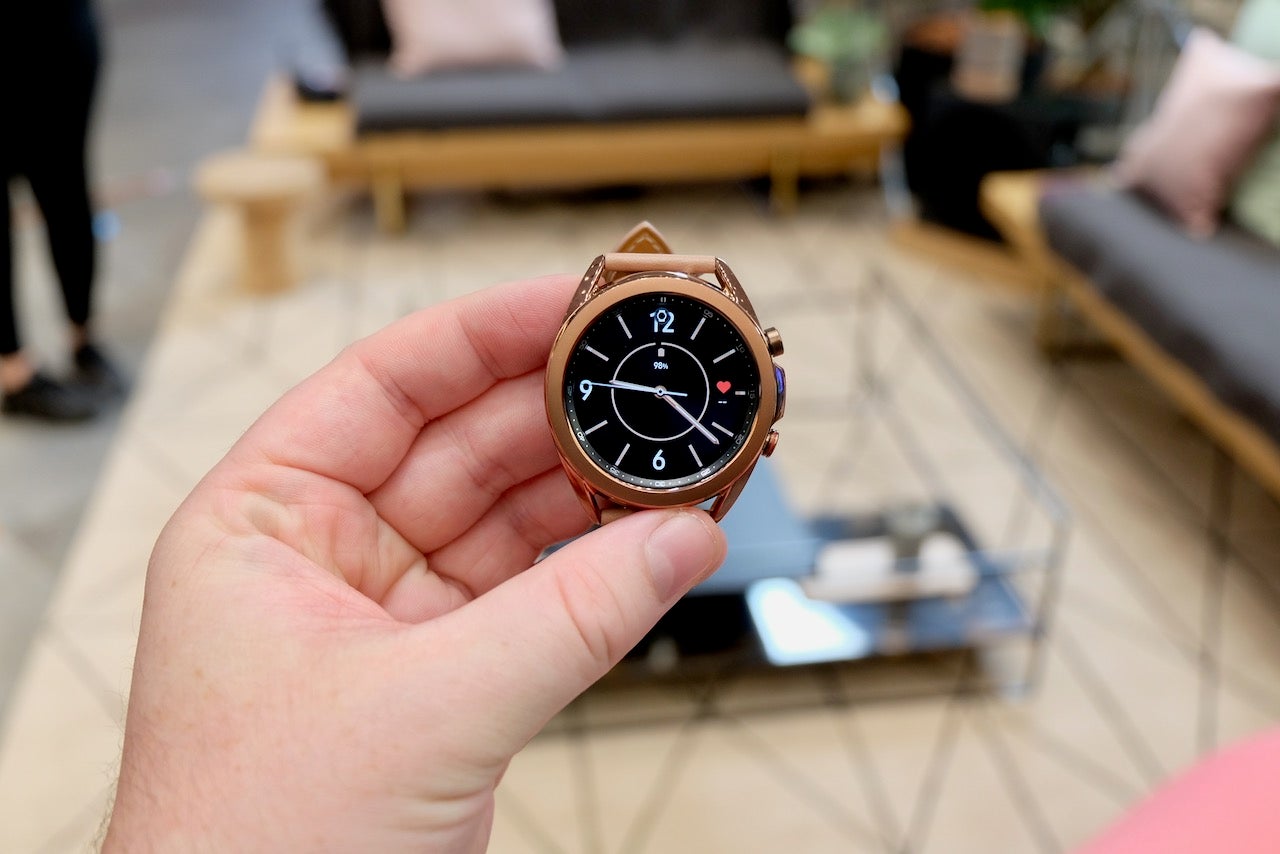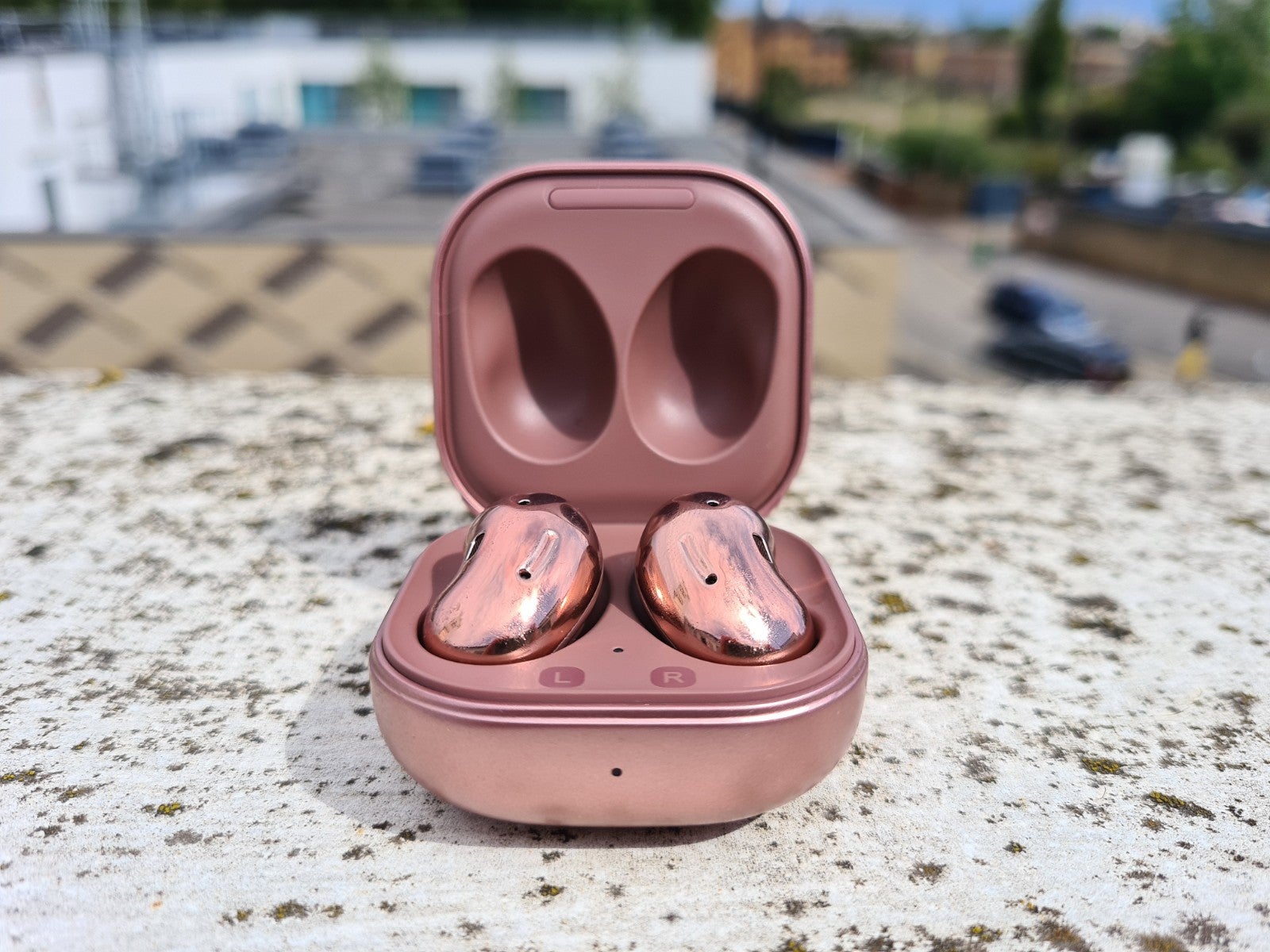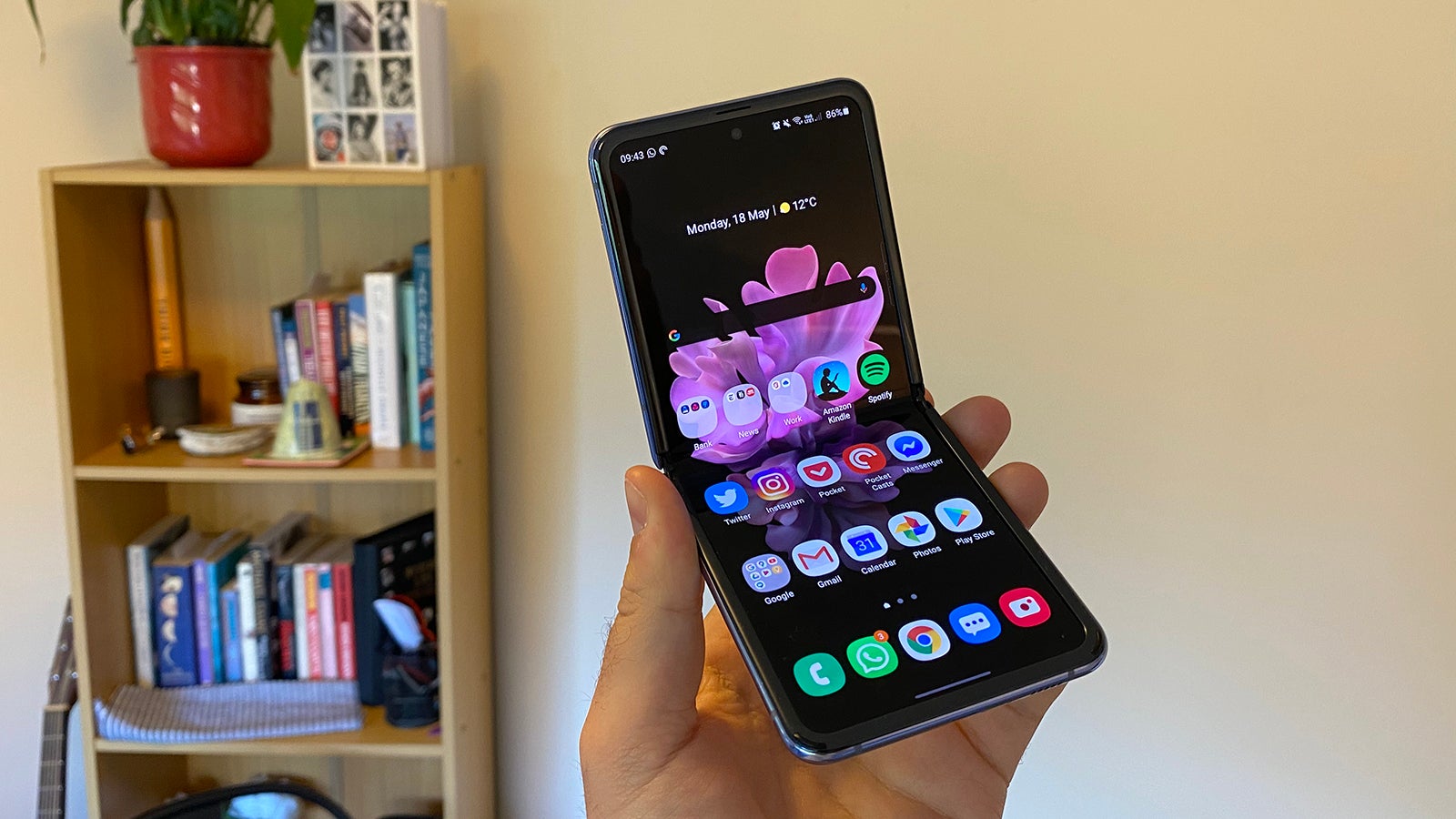Samsung Galaxy Buds Plus Review
Samsung Galaxy Buds Plus Review
If you are on the market for a decent, set of wireless buds, you could do worse than the Galaxy Buds+

Verdict
The Samsung Galaxy Buds Plus are significant step forward that radically improve on Samsung's 2019 true-wireless offering. They offer improved audio, better battery life and clear call quality than their predecessors. However, the lack of ANC is an issue.
Pros
- Improved audio and call quality
- Lengthy battery life
- Lightweight, comfortable fit
Cons
- No ANC
- Mids still underrepresented
Key Specifications
- Review Price: £159
- Bluetooth 5.0
- 11 hour battery life
- IPX2 water resistance
- 3 mics
- Fast and wireless charging
The Samsung Galaxy Buds Plus are company’s second stab at impressing themselves on the wireless earbud market.
At first glance they look a modest upgrade on the original Galaxy Buds, featuring an all but identical design, but Samsung’s made a few key upgrades that make the Galaxy Buds Plus feel like an improvement on their predecessor, but they’re still not the best wireless earbuds on the market.
The lack of ANC is something of an odd omission, and for a little extra cash there are still better sounding and featured sets available – such as the Sony WF-1000XM3 and Libratone Track Air+.
Design
- The Galaxy Buds plus have a very similar design to the original Galaxy Buds
- They only have an IPX2 water resistance rating, which means they’re not ideal for gym use
The Galaxy Buds Plus look almost identical to their predecessors, which is no bad thing. The earbuds come in a compact pebble shaped charge case and have the same ergonomic shape. This, plus the wealth of silicon and wing tip options you get in the case, make it quick and easy to get a solid, gym ready seal. Weighing 6.3 grams, the fit is suitably comfortable and snug.
The only downsides are that the Galaxy Buds Plus remain IPX2 certified and still have fiddly touch controls. The low IPX rating means they aren’t as water resistant as other competing sets, and are only guaranteed to survive splashing water at angles of 15 degrees or less. They’re fine for gym use, but are less suitable for runs in the rain.
Features
- The Galaxy Buds Plus offer brilliant call quality thanks to their new mic setup
- Samsung’s improved the Galaxy Buds Plus battery life, but still hasn’t added active noise cancellation
The touch controls work the same way as the first-gen Galaxy Buds. On paper this means you can pause/play audio, skip tracks and activate Google Assistant by tapping on the earbuds. However, like most true wireless sets I test that use touch capacitive controls instead than physical ones, the system is a little finicky to use in moderately damp conditions. Trying to skip songs while treadmill running the buds refused to listen to my commands on more than one occasion.
More significant changes have been made under the hood. The most noticeable is the addition of a third microphone. The new buds now have two external microphones and one internal which works to eliminate background noise. The system is a vast improvement on the original and makes calls on the Galaxy Buds Plus a significantly more pleasant experience.
Taking calls in a busy office full of background noise and the caller was able to hear me with zero issues. The earbuds still struggle in windy conditions, but this is an issue on every set of true wireless earbuds.
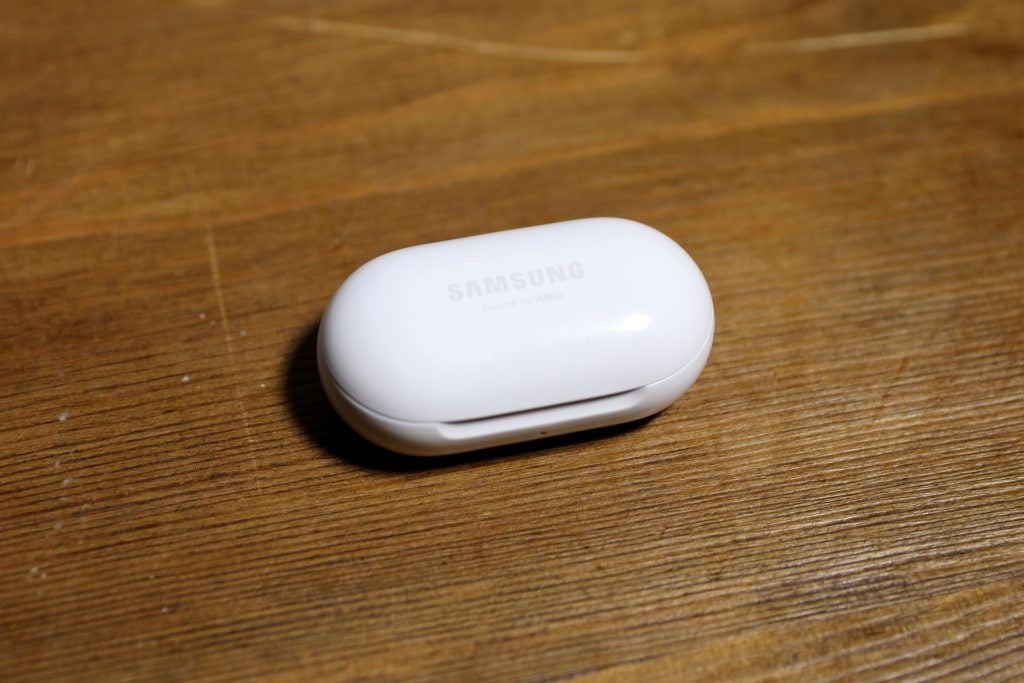
Samsung quotes the Galaxy Buds Plus as offering 11 hours worth of listening from a single charge. This is a big step up on the six hours of the original Galaxy Buds, and an impressive achievement considering the new Buds aren’t noticeably bigger or heavier. However, Samsung has only offered one extra charge with case, taking the Buds Plus 11 to a total of 22 hours. That’s less than the AirPods and most other competing efforts.
Despite that, I found the Plus’ have stellar stamina. They easily lasted a full week, which included my 30 minute morning workout, commute and music listening during the work day. The inclusion of fast and wireless Qi charging support makes it quick and easy to top up the earbuds battery if you forget to charge them.
Sound quality and software
- The Galaxy Buds Plus have better audio than their predecessor, but they can sound a little too bright for discerning listeners
- The lack of support for the aptX codec is an issue for serious listeners with Hi Res audio libraries
Powering up the Samsung Galaxy Buds Plus and it’s immediately obvious the company’s listened to feedback on the first generation’s audio quality. Samsung’s loaded the buds with a new two-way speaker setup with both a tweeter and a woofer inside.
The most noticeable change is how powerful the low end is. The Galaxy Buds Plus offer significantly more powerful and controlled low end than its predecessor. Bass extension has also been improved. Rumbling blues walking bass lines had a pleasing oomph and swagger that was missing on the first gen Galaxy Buds.

Outside of this, highs are suitably well represented with piano jazz having a pleasing sparkle. The downside is that mids still aren’t handled terribly well. Mid-heavy metal and rock guitar parts still suffer from sibilance and can distort at high volumes. Listening to textured post rock and classical music parts could also be lost. This is a shame as tonal balance is otherwise markedly better than the first-gen Galaxy Buds, with the lows and highs all feeling suitably separated and distinct.
Dynamism is ok. Crescendos and rock breakdowns have power and match the experience you can get on the Apple AirPods Pro. But they still aren’t as impactful as on other sets, like the Beoplay E8 3rd Gen.
Connection stability is significantly better than the first gen buds, which were prone to dropouts. Testing the Galaxy Buds Plus I never experienced any significant dropouts, even when walking in areas that knocked out competing sets, like the TicPods 2 Pro. The signal also remained stable at surprisingly long distances, which will be a boon for people planning to use them around the house.
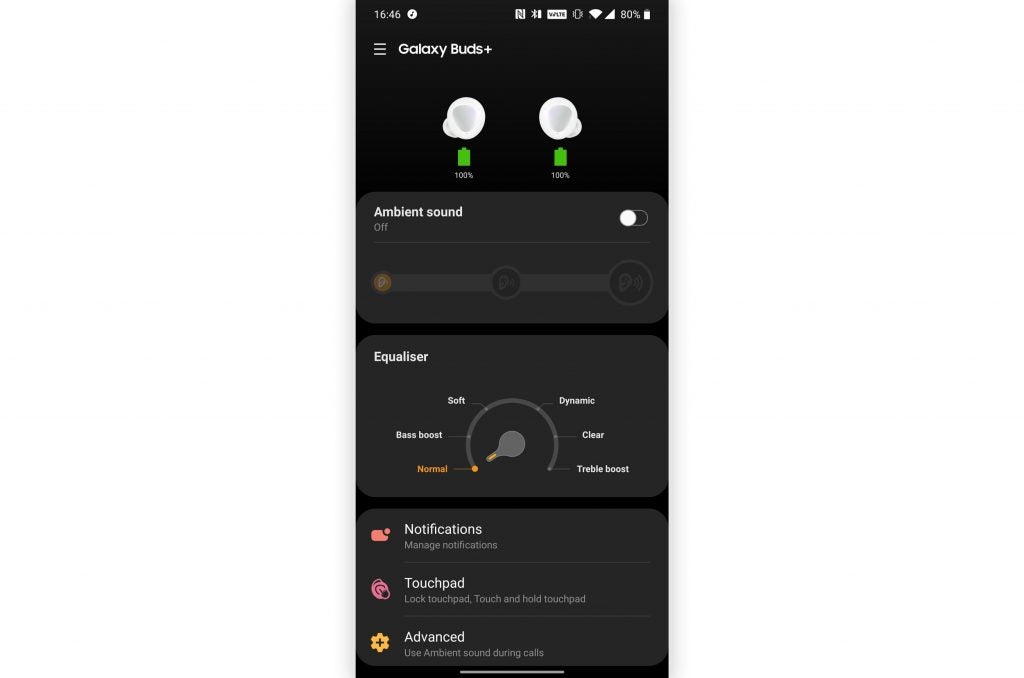
The only serious issues with the earbud’s audio is the lack of ANC and rather basic app. ANC is a cool bit of tech that helps earbuds eliminate background noise. In our experience it radically improves your listening experience when doing things like commuting or working in a noisy office.
A couple of years ago it was a rare sight in true-wireless earbuds outside of Sony’s flagship. But these days it’s increasingly common appearing on the Libratone Track Air+, Sol Republic Amps Air Plus and Apple AirPods Pro. It’s absence on the Galaxy Buds feels like a missed opportunity to join this trend.
The Android app also still feels underdeveloped, though there have been significant improvements with the iOS version. Jumping into the app you have a choice of preset sounds and manual slider to control the ambient sound level. This is fine, but I’d really like to see Samsung add manual controls so users can create their own sound.
Conclusion
The Galaxy Buds Plus are a significant improvement on Samsung’s first generation earbuds. They offer better audio quality, significantly improved call quality and a much lengthier battery life, despite retaining the same compact design. As a result:
You should buy them if:
- If you’re after a solid, Android-focussed AirPods alternative: For casual listening you could do a lot worse than the Galaxy Buds Plus. But, for a little more money you can still get better sound true wireless sets, like the Sony WF-1000XM3, which come with the added perk of ANC.
- You want a reliable discrete set of earbuds: The Galaxy Buds Plus have a wonderfully compact, comfortable to wear design that make them an ideal choice for casual listeners that don’t want to spend a fortune.
You shouldn’t buy them if:
- You care about active noise cancellation: The Galaxy Buds Plus don’t feature any form of ANC, so if you want a set that will block out background noise you’d be better off looking at the Airpods Pro or Sony WF-1000XM3.
- You want to use them at the gym: The Galaxy Buds Plus IPX2 water resistance means the buds aren’t robust enough to reliably survive runs in the rain or sweaty workouts.
FAQs
The Galaxy Buds Plus do not feature ANC. They only offer passive noise cancelling.
The Galaxy Buds Plus features Qi wireless charging support. This means they work with any charge plate compatible with the Qi standard. You can find out if the plate uses Qi in its specs.
The Galaxy Buds Plus are compatible with Apple iPhones. All you have to do is connect them to your iPhone using the handsets Bluetooth settings menu.
Specs
Trusted Score
Jargon buster
ANC
ANC (Active Noise Cancellation) uses an array of microphones in a headphone to detect the frequency of the sound coming at the listener, with the ANC chip creating an inverse wave (i.e. opposing sound) to suppress any unwanted external noises.
aptX
Qualcomm’s aptX codec can support higher quality audio than Bluetooth alone.
Bixby
Bixby is a digital assistant by Samsung. It offers similar functionality to Google Assistant and Siri, letting you control SmartThings devices or ask them questions using vocal commands.




